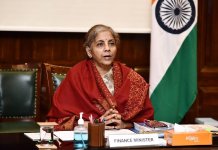The world is assembling at Paris to make a stern decision on de-carbonization. Unlike in the past at Copenhagen, countries are increasingly convinced about the need to cut emissions. All are victims of climate change and there is only one planet.
For India, the Paris COP 21 adds a unique responsibility because of the emission cutting agreement reached by the two largest carbon emitters – the US and China. India is the third largest carbon emitter though the per capita emission is the least among the ten largest emitters.
Understandably, the world is looking on India to make serious commitment on carbon emission front so that the temperature rise in the future can be restricted to the targeted 2% of the pre industrial era. Being the third largest emitter and a victim of climatic change, India is central to the global climatic change counter measures.
In recent years, there is increasing incidence of heat waves, floods in metros, fluctuating weather phenomena; rising number of cyclones, all indicate that climate change is engulfing the country.
Amidst the agreement between the number one and number two emitters, India was not sitting idle. New Delhi has made some smart and innovative steps towards emission cutting. The carbon cess on the use of coal has quadrupled. PM Modi who installed Asia’s largest solar park in Gujarat has expanded the solar energy target to 100 GW by 2022.
Raising the prices of petrol and diesel despite the softening of crude prices internationally itself can be read as an emission countering measure.
Similarly, India has made a contribution of USD 2.5 million for the vulnerable nations in the Commonwealth to help them introduce clean energy and reduce green-house gas emissions.
More funding by advanced countries is needed to protect the planet
Emission cutting is a development tax for developing countries like India. The option to use cheap energy sources like coal is to be abandoned at a phase of development that requires huge energy use. On the other, the present hot planet is the result of indiscriminate emissions made by the industrialized world in the past.
The developing world led by India thus demand that the advanced countries should bear a part of the cost of emission cutting by the developing world. There is demand for financing and technology support by the developed countries by the developed countries.
At Copenhagen, advanced countries led by the US agreed to allocate $100 billion to assist the developing countries. But at the door steps of Paris, voices are different on this assistance.
But the real transfer amount made by the West is going to be a point of conflict between the developed and developing countries at Paris.
Piyush Goyal, India’s Minister for power, coal, new and renewable energy, demanded greater involvement by the advanced countries on fighting global warming.
“As a developing nation we would expect the Paris climate agreement to be in accordance with the principles of common but differentiated responsibilities and equity. Developed countries should undertake larger emission cuts and provide adequate finance and technology to help developing nations fight climate change. The principle of ‘Polluter Pays’ must be respected during the climate change talks.”
At Copenhagen, advanced countries led by the US agreed to allocate $100 billion to assist the developing countries. But at the door steps of Paris, voices are different on this assistance.
Just before the Paris Conference, the Climate Change Finance Unit of the Department of Economic Affairs, Ministry of Finance in a paper, titled ‘Climate Change Finance, Analysis of a Recent OECD Report: Some Credible Facts Needed’, questioned the climate finance statistics by the OECD. The OECD in a recent report has illustrated statistics and stories about the way the group has financed climate support financing in developing counties.
“Numbers were derived on self-reported basis from self-interested players, and open to ‘gaming’ and exaggeration and definitions of climate change finance used were not consistent with the convention – to find more leeway to count progress?” the Climate Change Finance Units’ report has elaborated. The report questioned the methodology of the OECD report and observed that no serious consultations were done with developing countries themselves.
In Paris, the key contentious issues between India and the United States would be on the valuation for “adaptation” cost. Adaptation cost is the ‘development cost’ that the developing countries have to incur while adopting advanced emission cutting norms and thus foregoing their development activities. Current attempt is to transfer the adaptation cost by the developed world to the poor countries. India estimates it might need up to $206 billion for itself alone from 2015-2030. Conflict on this figure may emerge and cause as a stumbling block at Paris.
Amidst this high pressure and heat scenario at Paris, it is expected that COP21 may bring more pleasant results compared to the previous rounds. This is due to the increasing awareness and urge among the participants to counter emissions and thus global warming. China’s active emission cutting targets may encourage juniors in the developing group to come out seriously on emission cutting compliance. Similarly, the present wave of turbulent climatic conditions may compel countries to make serious steps.
*********










